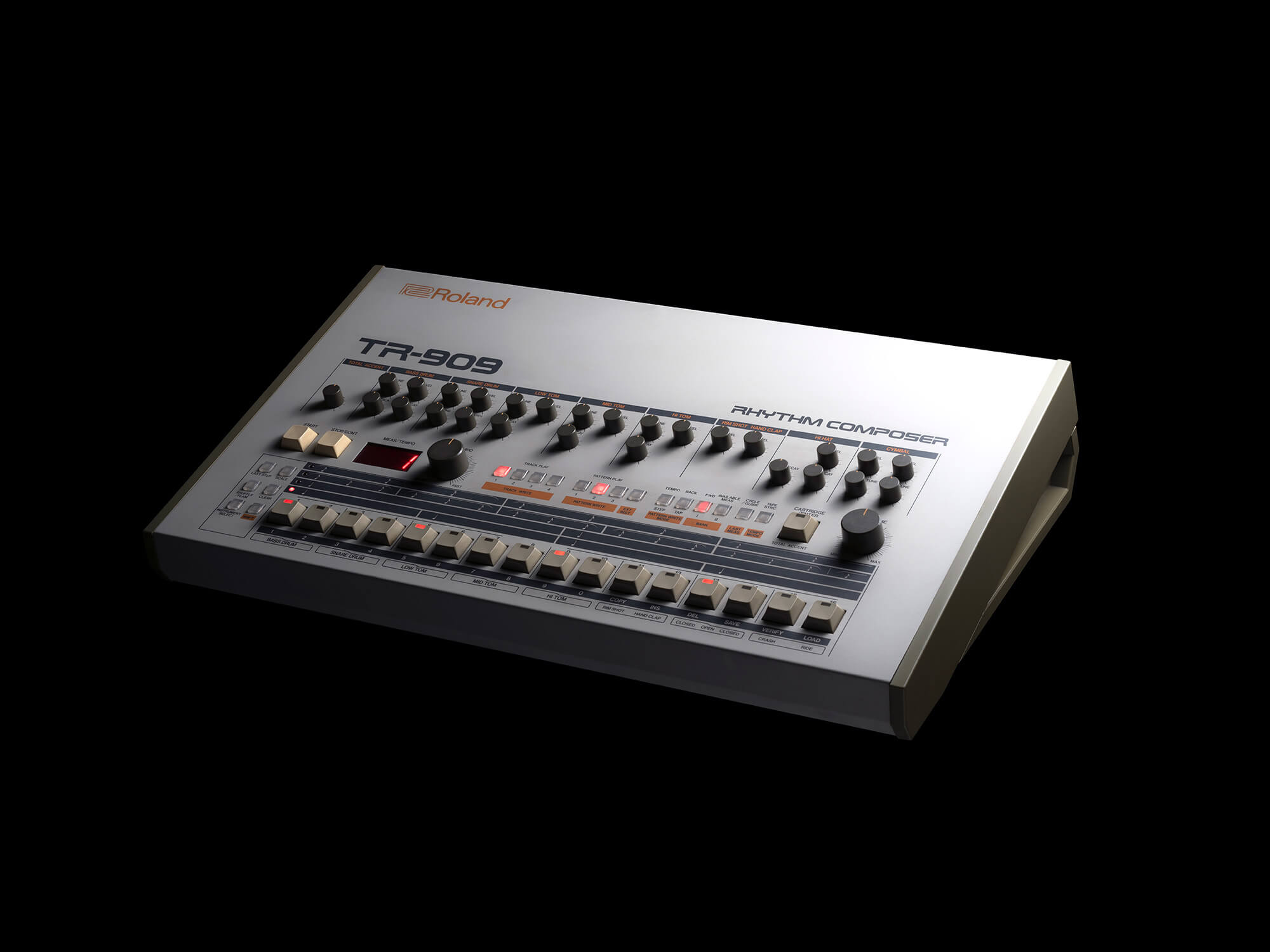
How the Roland TR-909 became one of the most iconic drum machines of all time
Jeff Mills, A Guy Called Gerald and Tyree Cooper talk to us about the legendary house hitmaker
In 1998, Daft Punk released the fifth and final single from the previous year’s era-defining album Homework. Its name, Revolution 909, saw many propose that the French duo were referencing The Beatles’ Revolution 9 or even One After 909. Remember, though, in French, the adjective comes after the verb. For Daft Punk, it was a TR-909 revolution.
Roland’s TR-909 is, in many ways, the sound of house music. Over the late 1980s and 1990s, the distinctive hi-hats and claps, punchy kick and bouncing toms of the third Roland Rhythm Composer became the sound of drums for a generation of artists.
“Stop the music and go home!” says a faceless police officer through a megaphone in the skit that starts Revolution 909. It’s the song’s only lyrical content, and is commonly seen as a comment on the governmental resistance that French dance musicians faced during the 1990s.
“I don’t think it’s the music they’re after, it’s the parties… I don’t know,” a 21-year-old Thomas Bangalter told American DJ Dave ‘The Wave’ Dresden in 1996. “They pretend it’s drugs, but I don’t think it’s the only thing. They don’t understand this music, which is really violent and repetitive, which is house; they consider it dumb and stupid.”
The TR-909 was the encapsulation of that violence and repetition, qualities that would predicate its eventual, game-changing success. Revolution 909 is underpinned by what many would consider a quintessential 909 rhythm: its grooving 128bpm, its raw, four-to-the-floor kick, its mid-frequency-rich claps and unmistakable digitally sampled hi-hats. Its lilting swing was not possible on the preceding TR-808 or TR-606, nor was its ability to sync with other gear via MIDI. It was capable of flams, accenting, pattern recall and chaining. It was something of a paradox: words like “expression” and “performance” were suddenly appearing in the same sentence as “machine”.
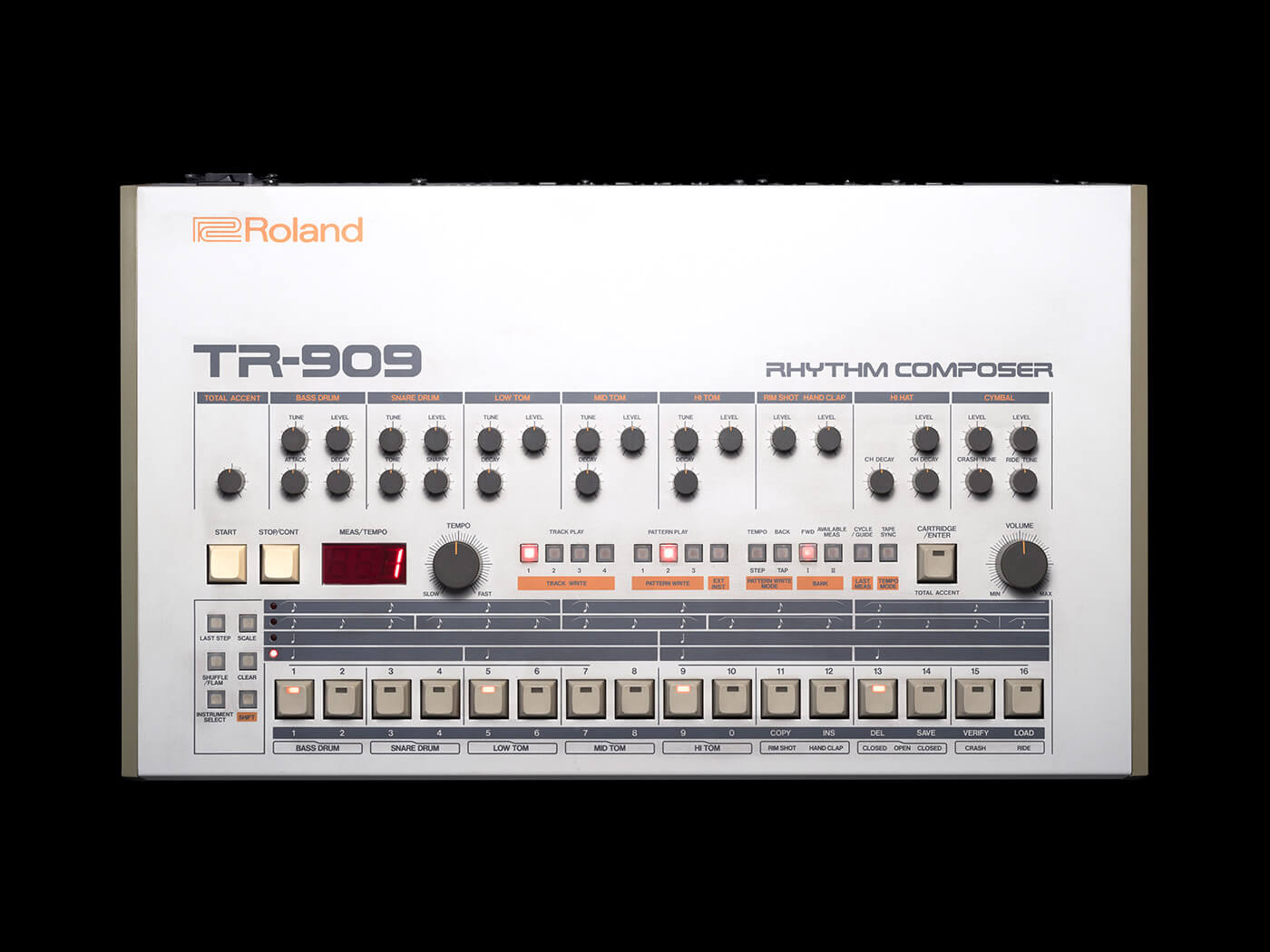
All of these qualities sound like the makings of an instant hit, but by the time Daft Punk’s ode to the TR-909 was released, the drum machine had already been in circulation for 14 years – no longer a modern innovation yet too young to be considered a classic. Needless to say, much like the TR-808, the 909 was not a commercial success upon its release. Sales would not reach anywhere the levels Roland was hoping for, and in 1985 – within two years of its unveiling – the TR-909 was discontinued. Just 10,000 units were made.
“In those days there were many sample-based drum machines,” Roland’s Kenichiro Nishi and the 909’s original technical engineer, Atsusi Hoshiai, told DJ Mag in 2019. “For example, Linn Drum, Oberheim DMX and the E-mu Drumulator. At the time, the drum machine trend was that of the ‘real sound’, so we feel perhaps the market was not yet ready for the synthesized drum sound that we pursued.”
Richard Katz joined Roland as a sales manager in 1982. “I witnessed the birth of MIDI in the Sequential booth in January 1983,” he tells us. “Digital was the way it was going, and frankly all anyone cared about. The [Yamaha] DX-7 was cleaning up in keyboards as well. We sold some Juno-106’s only because everybody thought the DX-7 strings were thin, so people would MIDI them together.
“The TR-808 was completely overwhelmed by the LinnDrum, and we needed to respond fast. I think they went to analogue for the drums because we weren’t quite ready for all-digital yet. The TR-909 was really short-lived – maybe one trade show before the TR-707 came out.”

Indeed, in 1983, mechanised drums – the most successful of which were still being created in the US by the aforementioned Tom Oberheim, Dave Rossum and Roger Linn – were yet to transcend the longstanding criteria against which they were being judged: that of how well they could recreate the sounds of ‘real’ acoustic drums and percussion. It would be several years before drum machines began to stake their ground as an instrument in their own right. After the TR-909’s discontinuation in 1985, unwanted units were released into the ether, turning up for next to nothing in second-hand shops and car boot sales.
What happened next, Roland could not have seen coming. This whimper of fanfare left machines like the TR-808 and TR-909 to be discovered by musicians privately and at their own pace, away from the braggadocio of corporate marketing and its matching price tags. Word began to spread. People were saying these machines might be applied in situations that did not call for the sounds of real drums – it might even be a better alternative. Almost all of their early adopters had undergone their own personal damascene experience, followed by a flurry of creativity as the scope of these machines revealed itself.
Manchester house legend Gerald Simpson, better known as A Guy Called Gerald, was one such early adopter. Not long after discovering the power of the Roland machines, he would release his debut single, 1988’s acid house anthem Voodoo Ray, and become an essential part of the electronic group 808 State – named for their love of the machine – penning breakout hits such as 1989’s Pacific State.
“I had started to collect second-hand, cheap instruments from second-hand stores in Manchester,” Simpson tells us. “Mainly the [still-in-business] Johnny Roadhouse. I was into electro-funk, jazz, stuff like that. A lot of the music I was listening to had definitely been produced using these instruments.
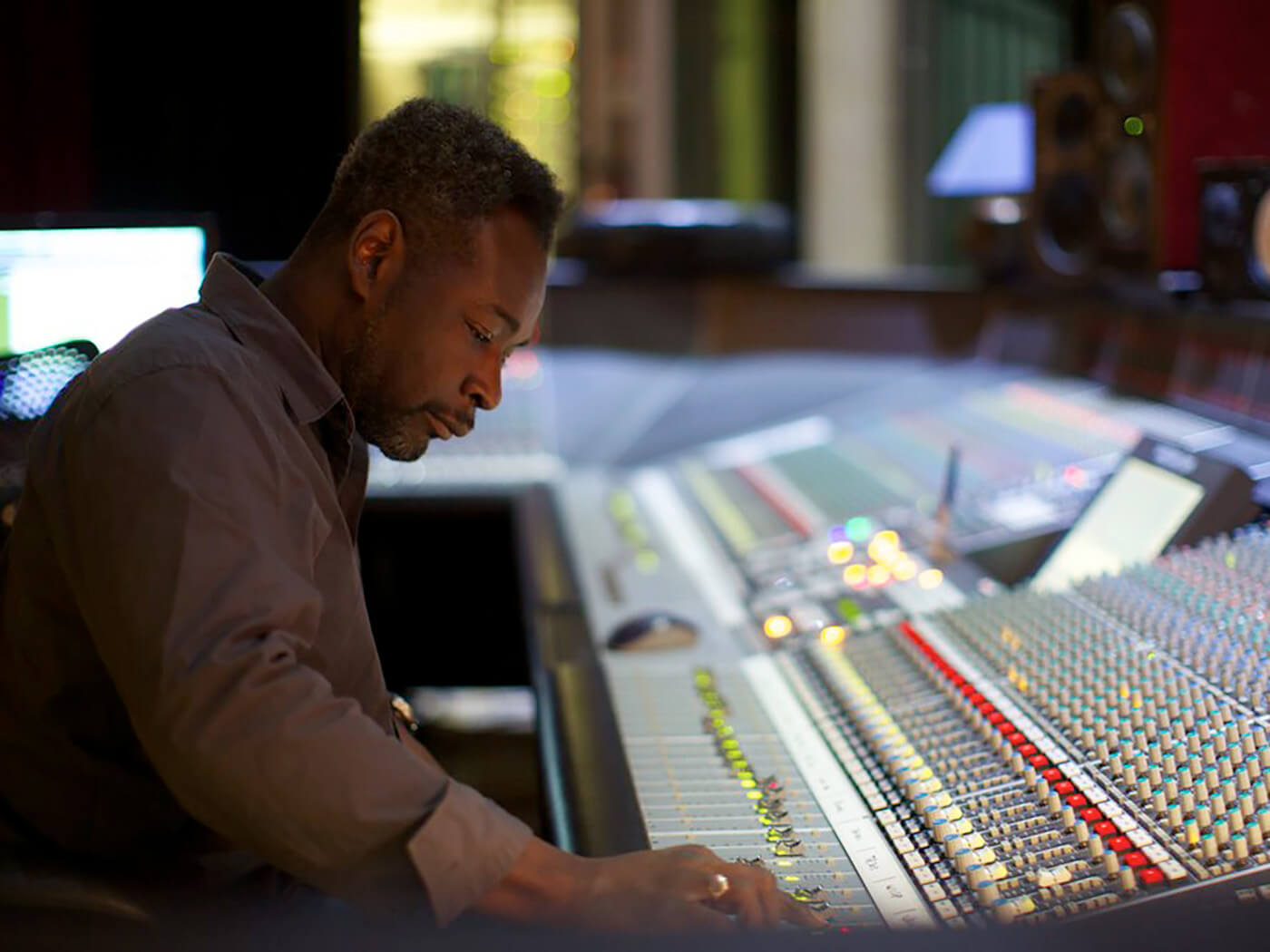
“There was another store down the road from Johnny Roadhouse, called A1 Music. They had new machines, and you could actually test them. That was the first time I’d seen a 909. I’d heard it, though. The first time I heard a 909 was probably on a [New York electro funk pioneers] Mantronix track called Get Stupid. I remember seeing what looked to me like a white 808. Like, ‘Wow, what is this?’ I remember plugging it in and it just lit up. It looked like some crazy computer robot or something. I remember tapping on the bass drum. You just got this thump, and, like, 1,000 tracks come to mind. I’m instantly just thinking, ‘Mantronix!’ I was 19 or 20.”
Simpson continues: “I was like, ‘God, I actually need to get hold of this machine’. But it was in A1, the retail shop, not in the second-hand shop. It was gonna be impossible to get because of how much they cost. But like a year later I saw the same machine in Johnny Roadhouse. The value wasn’t that much. I mean, it was a lot for me but it wasn’t that expensive. But then I started to see them for sale in the back of tech magazines. It was like, ‘What?! The price of 909s just shot up!’ This was 1986, ’87.”
It was in that two-year period that Jeff Mills began working with the 909. One of the most influential figures in US house music, Mills spent his career DJ’ing on Detroit’s WDRQ 93.1 FM. By the time he began using the 909, the pioneer had already been using drum machines to augment his DJ sets for some time.
“My experience with integrating equipment into the DJ set goes really far back, all the way to the early 1980s,” he tells us. “I was very young and didn’t have much money. So it wasn’t Roland machines, because I couldn’t afford them. It was a case of whatever I could afford, like small Casio machines, and having them modified. Eventually I was making more money and I could afford a 909. It was around ’86, ’87, when I really started using the machine.”
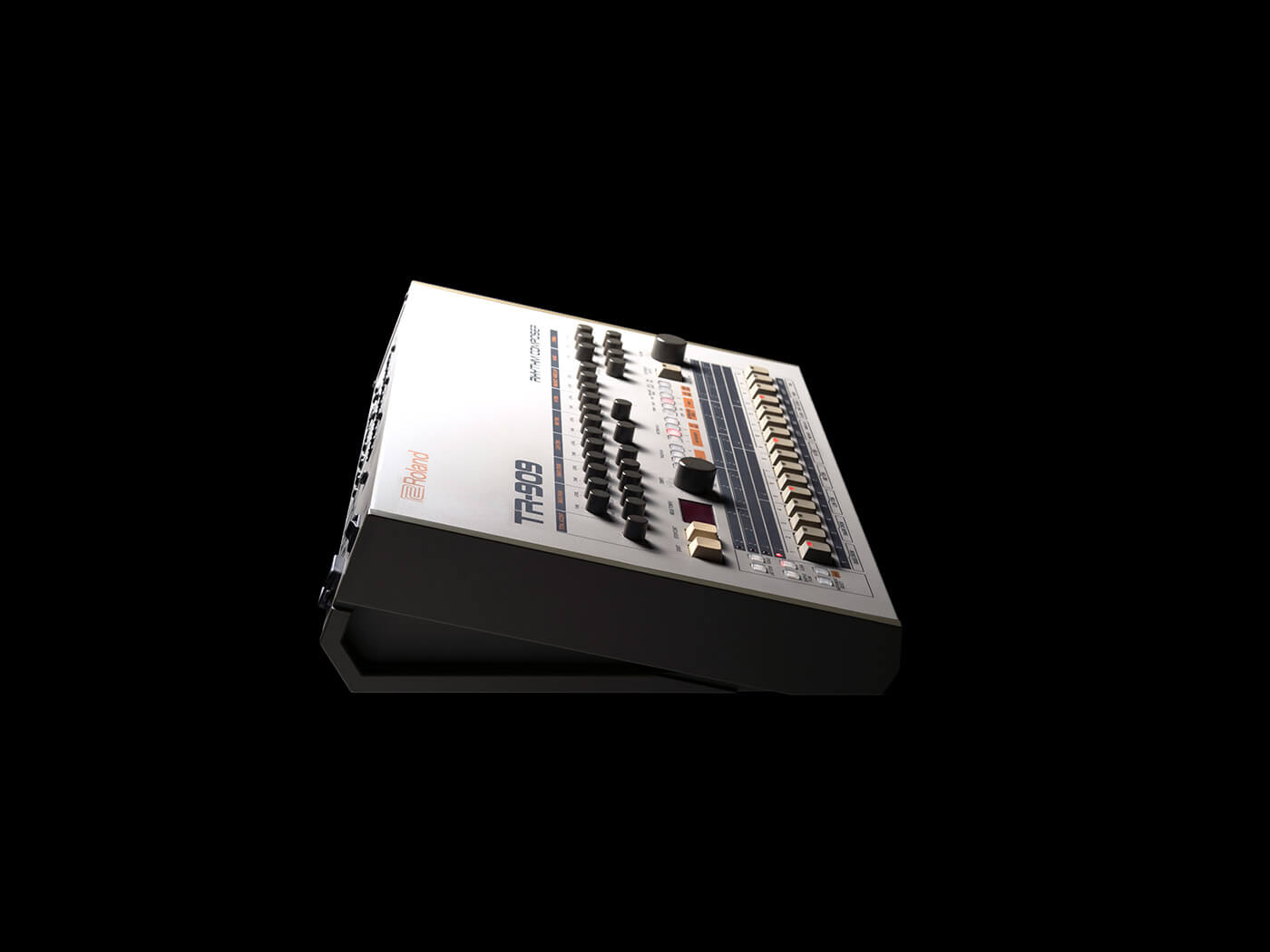
The use of the 909 to accompany the mixing of records provided a way to create and extend transitional phrases, as well as to insert fresh creativity into a DJ set. “My first approach was using it as pretty much a standalone thing – in other words, something else, other than a record,” says Mills. “I could make a transition or make a bridge over to something else using this machine. I would pre-program the patterns and then either xstart it from a cut or find some way to make the segue into the machine, and then find a way out of it. I had started using it in a radio show that I was producing at the time. But I didn’t think that it was something that I could get into as an instrument.”
Chicago house icon Tyree Cooper is perhaps best known for 1988’s hip-house hit Turn Up the Bass. Intimately associated with legendary Chicago house label DJ International, Cooper also worked the 909 into his DJ sets. He remembers seeing the 909 for the first time in 1985 or 1986. “I was just starting to get into production,” he says. “Mike Dunn was my DJ’ing partner at the time. I had bought a decent drum machine, this Gemini Beat Box. I took it to Mike and he was like, ‘It’s cool, but how do you program it?’.”
The 1970s Gemini Beat Boxes sounded good but were limited machines. They offered pre-programmed patterns alongside a tempo control, tone control and little else. Cooper and Dunn needed more.
“My first experience actually touching that motherfucker had to be about ’86,” says Cooper. “I was experimenting with different kinds of drum machines. The first one was Marshall [Jefferson]’s 808. I bought it to make my first record with. It was nice but when I got to the 909, it was a whole different ball game. It was like, ‘Oh, my gosh. I could do this with this?!’ You just started learning.
“Lidell Townsell showed me around the machine. We were a remix team. I was doing the drums and the drum of choice was the 909. By ’86, I got that first little taste. ‘Oh! Oh! You’re telling me I can make my own tracks and just play them? And just in a random order? Or I can set it up to have it play like I want it to?’ It was gamechanging.”
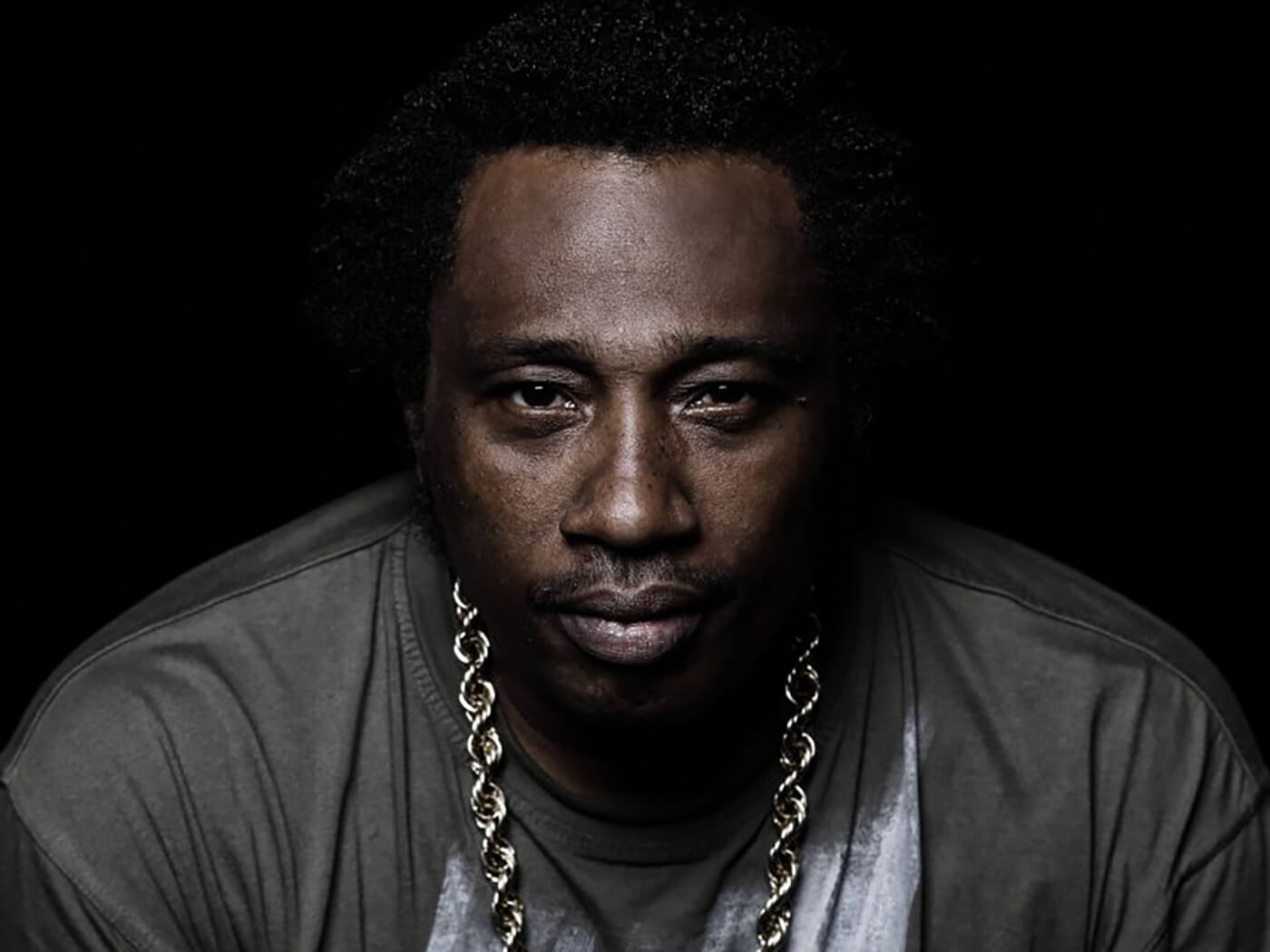
A Guy Called Gerald remembers the 909’s capacity for swing as a turning point. “I was excited about creating something with a bit of swing to it,” he remembers. “Because, everything that I’d been programming up to then had basically been coming from the 808, with a straight 16th-note pattern. There was one track by Mantronix called Ladies, and it just had this swing. I was like, ‘How the fuck did he do that?’. Then I realised it was the 909. That was the excitement of wanting to use the swing from the 909. That’s how the bassline for Pacific State came about.”
“I did a hardcore hip-house with the 909,” says Cooper. “I learnt the flam, the brrap. I found a way to shuffle my beats in a 909. So now hardcore hip-house has a shuffle beat. I was learning my way around the 909 without the instruction book. Making my own rules as I go along.”
“In the case of the TR-909,” remembers Roland’s Katz, “it was blown out for $297.97 to the dealers. I sold a shit-tonne at that price. Being in Miami, the TR-808 was always the one everybody wanted. Around 1985, people cleaned out the pawnshops of TR-808s. The TR-909 came a long way after the TR-808 in terms of mythology. I feel it is pretty recent, the 1990s, when the TR-909 started to become a thing. It was a more linear popularity. When I started getting asked if I’d seen one in my travels, I knew it was back. That was in the early 2000’s.”
Of all the 909’s prominent users, Jeff Mills is perhaps the one who has stretched its capabilities the furthest. Having begun working with orchestras like the Montpelier Philharmonic in the early 2000s, using the 909 alongside tubular bells and strings, he began to respect the drum machine more as its own instrument. “Quickly, very quickly, I began to look at the machine differently, because I was playing with musicians, each of whom had their own instrument,” he says. “I began to look more into the machine and how I could possibly use it as a solo piece.”
A later collaboration with the late Nigerian musician Tony Allen helped Mills solidify that new approach. “About 10 years after that, I got an invitation to meet Tony Allen at his studio in Paris,” says Mills. “He was inviting musicians that were around the city to come in and just jam, just to see what would happen. I know Tony’s work and I thought that I should not go there without something new or something interesting to present. So the night before I went, I plugged in the machine and I began to look at how I could solo with it.
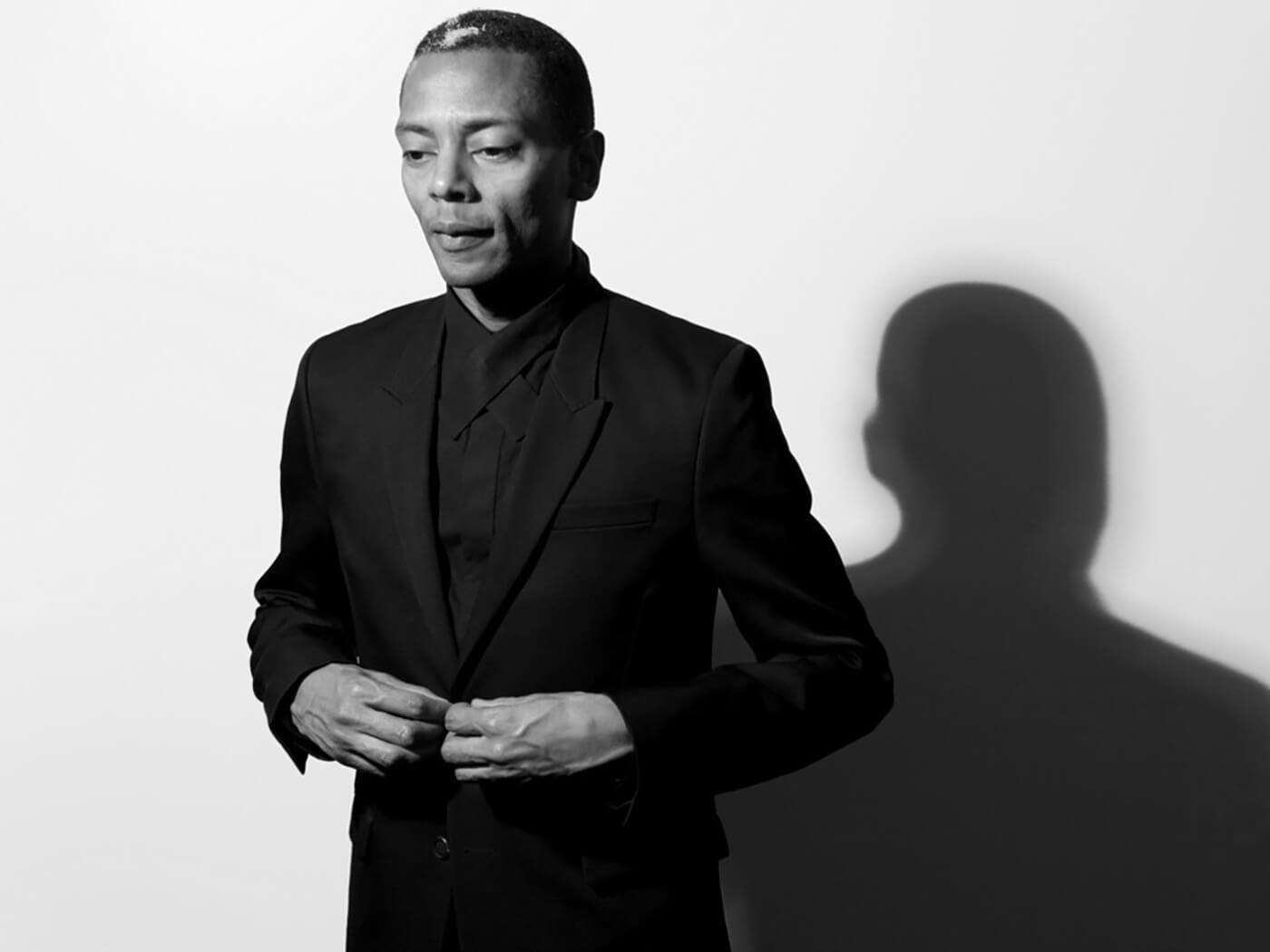
“I came up with this idea of using the stop and start buttons to play it as an instrument in itself. Playing the first beat or the first two beats of a pattern, or the first three beats, or inverting it by hitting the continue button first and then the start button. Just finding new ways to be more creative with the machine. The next day, I went to the studio and met Tony and we plugged everything in. While we were playing, I was kind of introducing these things that I had come up with the night before, and everything clicked. We decided, ‘Come on, let’s work together, let’s perform. Let’s make music.’”
The 909 is proof that some of the most significant breakthroughs in music happen, all things considered, by sheer convergence. Dance music begat an approach primed to accommodate the quirks of the 909’s novel sound; neither realistic nor fanciful, energetic yet not quite frantic, it occupied an uncanny space in an entire generation of musicians’ understanding of what drums can be. Somehow, it made perfect sense.
“Look,” reflects Cooper, “I played four instruments in high school: flute, clarinet, trumpet and saxophone. None of that shit worked when I was making house music. All that shit was out the window. House music has its own key. The key of H. It could be a singer, it could be a tone. It could be… off. But it feels so good when it fits. When it’s just right. That’s the key of H. That’s house.”